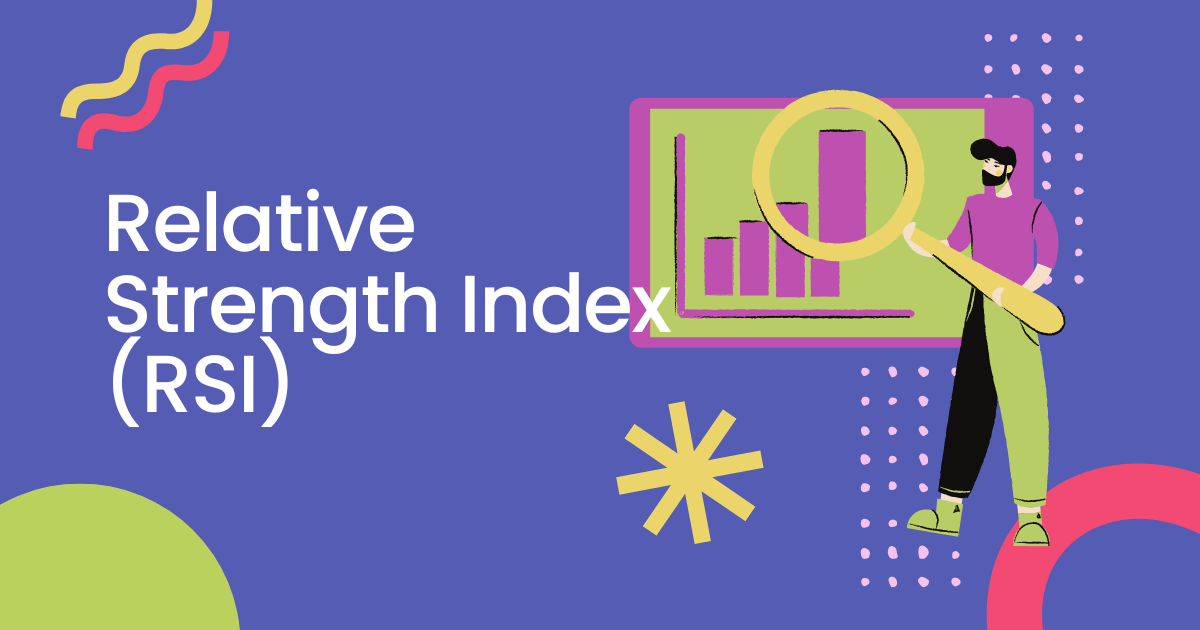Introduction
In the fast-paced world of finance and investment, having a firm grasp of technical analysis tools can be the key to unlocking profitable opportunities. One such tool that has garnered widespread attention and acclaim among traders and investors alike is the Relative Strength Index (RSI). In this definitive guide, we’ll delve into the nuances of RSI, exploring its functionality, interpretation, and practical applications to elevate your investment strategies to new heights.
Understanding Relative Strength Index (RSI)
What is RSI ?
The Relative Strength Index, or RSI, stands as a formidable momentum oscillator renowned for its ability to gauge the velocity and magnitude of price movements. Conceived by J. Welles Wilder Jr. in the late 1970s, RSI serves as a crucial barometer for identifying potential overbought or oversold conditions in various assets, furnishing traders with invaluable insights into potential market reversals.
Unlocking the Mechanics of RSI
At its core, RSI operates through a meticulous mathematical formula that scrutinizes the magnitude of recent price gains and losses over a designated timeframe, typically spanning 14 days. The resultant RSI values oscillate between 0 and 100, with readings surpassing 70 indicative of overbought conditions and those plummeting below 30 signaling oversold conditions.
Key Features and Interpretation
- Overbought and Oversold Signals: RSI’s prowess lies in its ability to identify overbought or oversold conditions, thereby providing traders with strategic entry and exit points. A reading exceeding 70 suggests overbought conditions, potentially heralding a price correction, while a reading dipping below 30 indicates oversold conditions, potentially presenting a ripe buying opportunity.
- Divergence Analysis (Exploring RSI Divergence): RSI divergence, a phenomenon where price movements deviate from RSI trends, holds significant predictive power. RSI divergence occurs when the price of an asset moves in the opposite direction of the RSI indicator, providing early signals of potential trend reversals. Bullish divergence occurs when prices form new lows while RSI charts higher lows, hinting at a bullish reversal. Conversely, bearish divergence emerges when prices hit new highs while RSI records lower highs, signaling a potential bearish reversal.
- Trend Confirmation ( Harnessing the Power of RSI in Risk Management and Market Trends) : RSI serves as a reliable gauge for confirming prevailing market trends. During uptrends, RSI typically hovers above 50, whereas during downtrends, it tends to linger below 50. Crosses above or below the 50 level can denote potential shifts in market sentiment and trend direction.
Practical Applications of RSI
- Identifying Overbought and Oversold Conditions: One of the primary uses of the RSI is to identify overbought and oversold conditions in a security. When the RSI value is above 70, it is considered overbought, suggesting that the security may be due for a price correction or reversal. Conversely, when the RSI value is below 30, it is considered oversold, indicating a potential buying opportunity.
- Spotting Trend Reversals: The RSI can help traders identify potential trend reversals in the market. Bullish and bearish divergences between price action and the RSI indicator can provide early warnings of shifts in market sentiment, allowing traders to adjust their positions accordingly.
- Confirming Trends: The RSI can be used to confirm the strength of a prevailing trend. During uptrends, the RSI tends to remain above 50, while during downtrends, it tends to stay below 50. Crosses above or below the 50 level can signal potential changes in trend direction.
- Generating Buy and Sell Signals: Traders often use the RSI to generate buy and sell signals. For example, when the RSI crosses above 70, it may signal a potential sell signal, while a crossover below 30 may indicate a buying opportunity.
- Filtering Trades: The RSI can act as a filter for trades, helping traders identify high-probability setups. By only taking trades that align with the RSI’s overbought or oversold conditions, traders can increase the likelihood of successful outcomes.
- Risk Management: Incorporating the RSI into a risk management strategy can help traders limit losses and protect capital. Setting stop-loss orders based on RSI levels can help traders exit losing positions before significant losses occur.
- Analyzing Market Strength: The RSI can provide insights into the overall strength of a market or security. A rising RSI suggests increasing buying pressure, while a declining RSI indicates waning momentum.
- Combining with Other Indicators: Traders often use the RSI in conjunction with other technical indicators, such as moving averages or trendlines, to validate trade setups and improve the accuracy of their analyses.
Conclusion
In conclusion, the Relative Strength Index (RSI) stands as a cornerstone of technical analysis, offering traders and investors invaluable insights into market dynamics and price movements. Whether utilized for interpreting market sentiment, generating trading signals, or managing risk, the RSI remains an indispensable tool in the arsenal of successful traders. By understanding its nuances, exploring its practical applications, and adhering to best practices, traders can embark on a journey towards mastering the art of RSI analysis and unlocking new realms of trading success.However, it’s imperative to bear in mind that while RSI serves as a potent analytical tool, it should be wielded judiciously in conjunction with other analysis techniques and risk management strategies. By honing your understanding of RSI’s mechanics and practical applications, you can chart a course towards investment success and financial prosperity.
ALSO READ
Liked our article ? Subscribe to get weekly updates


